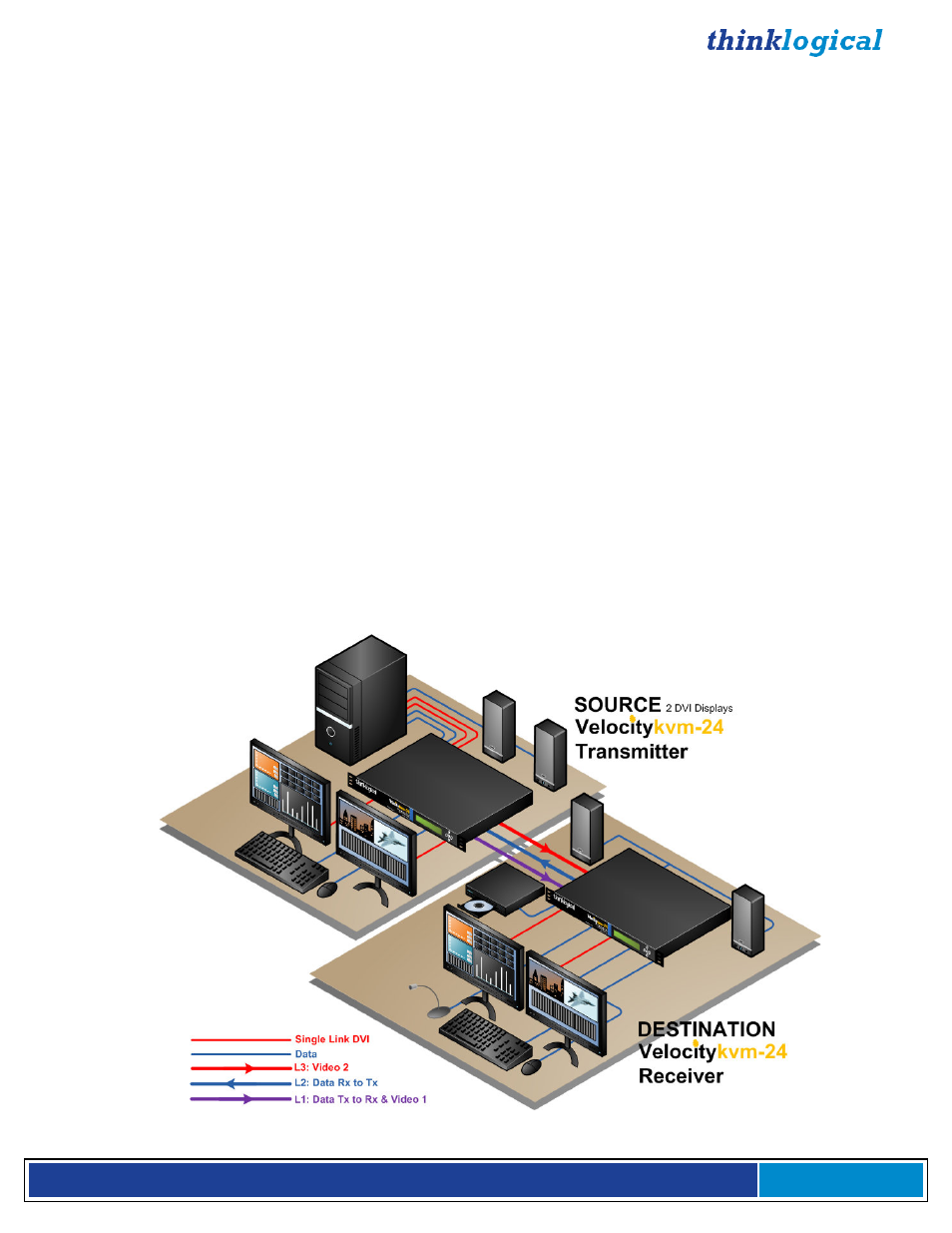The fiber system, Why fiber, Multi-mode fiber – Thinklogical Velocitykvm-4, 5, 8, 24, 28, 34, 35 & 38 Manual User Manual
Page 7: Single-mode fiber

V e l o c i t y K V M E x t e n d e r P r o d u c t M a n u a l , R e v . B , J a n u a r y , 2 0 1 4
Page 7
The Fiber System
Each system includes a transmitter and a receiver connected by fiber optic cables. The transmitter
connects to the source computer with standard cables and the receiver provides connections to the user
interface devices.
Standard VelocityKVM Extenders support PS2, full duplex stereo audio, serial
(RS-232), USB HID and USB 2.0.
Why Fiber?
In heavy-volume, metropolitan area networks, the limit on how much bandwidth or data that can be
carried across a copper line can become a bottleneck for enterprise access and ultimately, for revenue.
Fiber Optic Cable alleviates this problem by offering substantially greater bandwidth.
Multi-Mode Fiber
Transmission Distance (up to 350m using 50/125µm fiber)
Multi-mode is designed for transmission distances such as those found within a single building or facility
and thus, is ideal for multi-channel television broadcast systems. Multi-mode may be used to send video
signals from room to room or floor to floor. The Multi-Mode VelocityKVM Extender allows video and
peripheral transmission distances up to 350 meters using 50/125µm fiber, making it an ideal solution for
in-house applications.
Single-Mode Fiber
Transmission Distance (up to 40 kilometers)
Single-mode is designed for long distance transmissions and thus, is ideal for multi-channel broadcast
systems. Single-mode may be used to send video signals from workstation to workstation, from building
to building, or from studio to transmitter (STL) with a video resolution of 1920 x 1200. Using 9µm fiber
with SM/UPC connectors, the Single-Mode VelocityKVM Extender allows video and peripheral
transmission distances up to 40 kilometers, (25 miles) making it an ideal solution for metropolitan area
networks and most other applications.
